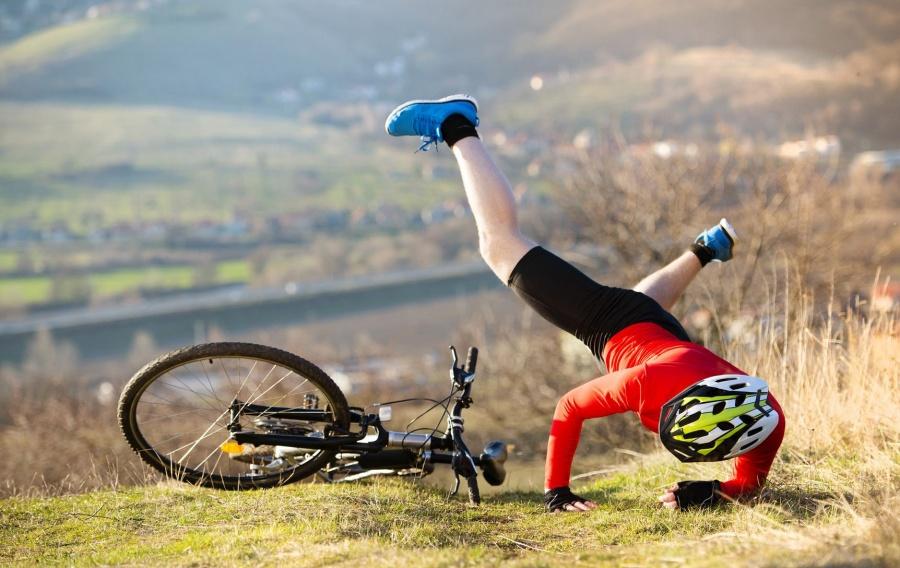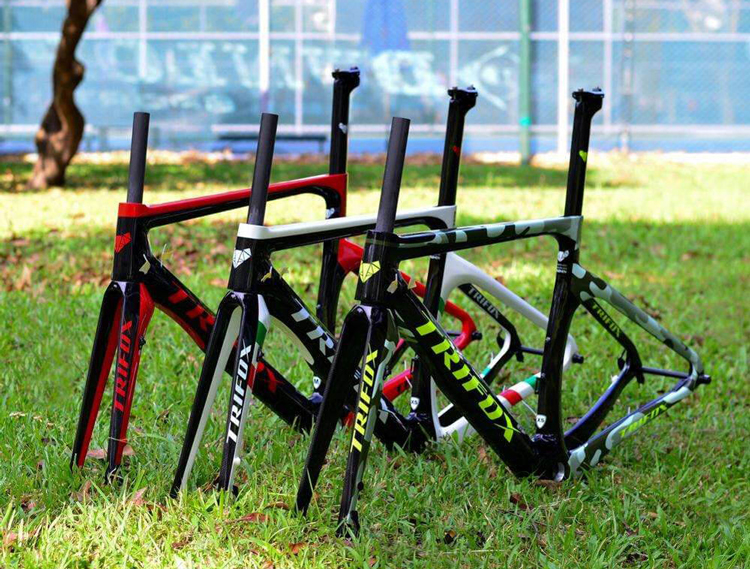In outdoor sports, injury is the most common thing, and cycling is no exception. However, do you know anything about how to deal with wounds? It doesn't matter if you don't know this knowledge, let's take a posture together to see what are the methods for outdoor cycling injuries.
Knee Injury
There are nothing more than two reasons for knee injuries:
One is overwork injury: on the one hand, it may be caused by too long riding a bicycle, on the other hand, it may be caused by an uncoordinated body when riding a bicycle.
The second is that the knees get cold in cold weather.
prompt:
1. Apply ice to the knee for about 20 minutes;
2. If the pain point is in front of the knee, raise the seat cushion by 2~3mm. If the pain point is behind the knee, lower the seat cushion by 2~3mm. When climbing hills, the muscles are often used alternately in sitting or standing positions.
3. Keep your knees warm. It is recommended to wear knee pads or long trousers when riding a bicycle, especially when the temperature is low.
Waist Pain
For novices or riders who have not been riding a bicycle for a long time, it is normal to feel low back pain, but it is more uncomfortable that sometimes such pain extends to the legs.
prompt: Pay attention to exercising these parts when training. The more you ride a bicycle, the tougher your back muscles will be. A high-quality double shock-absorbing bicycle can also help reduce waist pain.
Neck Pain
Usually, if you stretch your neck for a long time, your neck muscles will become tired and sore.
prompt:
1. Adhere to the correct cycling posture-don't hold the handlebar too tightly, sink your elbows and shoulders, relax the whole body, and ensure flexible upper body movement.
2. Frequently massage the neck muscles. If the pain persists, you can ask a chiropractor to massage the bone.
Skin Abrasions
Skin abrasions are generally caused by other conditions, such as cycling too fast, inattention, and failure of the brakes.
prompt: The most basic treatment is to clean the wound with a medical disinfectant swab and red syrup. To keep the wound clean, wear looser clothes. According to different bruises, the tetanus vaccine is sometimes given.
Skin inflammation
The friction between the skin or clothing, as well as contact with pollen in the air, may cause skin inflammation.
prompt:
1. Pay attention to personal hygiene, and carry out antibacterial treatment on the body and skin.
2. Before setting off, you can use petroleum jelly and tea tree oil to wipe the irritated parts for lubrication and protective treatment.
3. When choosing clothes, long-sleeved ones are better. Choosing professional cycling suits will also reduce skin friction. If the weather is warmer, wear thinner and looser clothes.
Sunburn
Male riders usually ignore the problem of sunburn. In fact, the skin is easily sunburned (inflammation, damage, etc.) when exposed to strong ultraviolet rays for a long time.
prompt:
1. Put on sunscreen: apply sunscreen on exposed parts of the body before departure, such as the face, nose, arms, arms, neck, ears, bare legs, and other parts.
2. Wear leg covers and arm covers on the legs and arms.
3. Calamine liquid and ice cubes can help alleviate sunburn. Use better-quality lotion to relieve symptoms and keep the sunburned area moist.
4. If there is a scar, be sure to cover it with clothes and other things.
Acne
This problem mostly occurs between the legs. It is caused by the skin and epidermis breakage caused by the friction between the skin and the seat cushion, and sometimes it is caused by ingrown hair. These boils can easily become purulent after being infected by sweat.
prompt:
1. Buy high-quality cycling shorts, which usually have less friction on the skin.
2. After riding the bicycle, put on clean, dry clothes immediately after showering.
3. If you have acne, after the acne matures, cut it open, squeeze out the pus, and then disinfect it. At the same time, use hot wax to remove the hair on the infected area to prevent the acne from getting worse. However, it is generally neither hygienic nor safe to handle it by yourself. It is recommended to go to the hospital.
Eye injuries
Why is it important to wear cycling glasses when riding a bicycle? Of course, it is to avoid some things from hurting the eyes, such as sunlight, insects, plants, dust, gravel mud, etc.
prompt:
1. Wear cycling glasses; (you can buy glasses with replacement lenses or glasses that automatically adjust to the light).
2. If the mud splashes around, you can't just wear glasses, and you need to turn your face to one side to prevent the mud from entering your eyes.
Fractures
If there is a fracture, it is usually a serious bicycle accident. Although this is accidental, it is better to know more about the situation and be prepared for it.
prompt:
1. If you have the conditions to treat the wound yourself, first treat the wound yourself: cover the wound with a clean cloth, and then tie it up to prevent blood from flowing out of the wound; then use a bandage or splint to fix the injured part.
2. Calmly seek medical attention; if you are waiting for rescue, be careful not to subject the wound to an external force.
Severe Rib Pain
This sharp, sudden pain in the ribs is caused by injury when the diaphragm is pulled up from under the ribs.
prompt:
1. Warm up before exercise.
2. When riding a bicycle, do not hunch back on the handlebar, straighten your back, straighten your chest, and leave enough space for the diaphragm.
3. The speed of riding a bicycle should be within one's capacity, and the body should be able to bear it.
Heatstroke
One of the big challenges facing cycling in summer is the venomous sun. If the human body cannot control body temperature through the perspiration mechanism, heat stroke will occur.
prompt:
1. Carry the heatstroke person to a cool place inside, take off his clothes, wrap it in a sheet soaked in cold water, or put the patient in a bathtub to lower the body temperature below 38 degrees. If the patient is awake, drink saline every ten minutes to replenish the water.
2. Cyclists can bring some cool oil, Rendan, ten drops of water, and other medicines to prevent heatstroke.
3. You can choose to ride a bicycle in the morning or in the evening. In hot weather, if your body can't hold it, don't try your best.
Sprain
Incorrect cycling posture and uneven roads usually result in excessive stress on body joints and sprains.
prompt:
1. Hang the limbs with a bandage to reduce swelling, reduce internal bleeding, and prevent inflammation.
2. Use anti-inflammatory cream to apply, or use ultrasound for physical therapy or exercise therapy.
3. Gently move the injured part to help recovery, but also to avoid muscle atrophy and stiffness.
Pain In Hands
Rugged roads, too much impact, straight arms, or holding the handlebar too tightly for a long time can cause pain in your hands (including wrists).
prompt:
1. Install shock absorbers and dropper posts, and wear cycling gloves.
2. Remove the handle from the handlebar from time to time while riding the bicycle, and shake it a few times before grabbing the handlebar.
3. Grasp the handlebar with the back half of your hand, do not use the sensitive part between your thumb and index finger.
Achilles tendon
When the saddle is too high, you must use your toes to pedal as hard as you can. Excessive force for a long time can cause damage to the tendons.
prompt: Adjust the height of the saddle. When riding a bicycle, try not to move your feet and ankles at 90 degrees. If you are traveling for a long distance, you should try to pedal with different parts of your feet to avoid excessive tension in your tendons.
Back pain
Due to the incorrect cycling posture, when riding a bicycle on a rough road, the straight spine is not cushioned, and the bumps will squeeze the spine joints together, thereby aggravating back pain.
prompt: Choose a bike of the right size and correct your cycling posture. When riding a bike, your back should be arched, and hip joints and shoulders should not collapse, so bumps will cause your back to arch slightly, which is harmless.




















































































